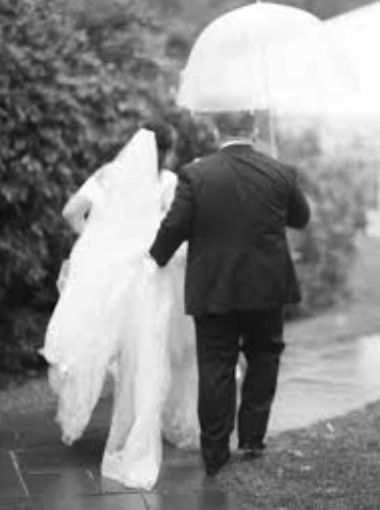No Maori Allowed – a Story of Pukekohe
A story of our country that we need to know, learn from, and not repeat.

No Maori Allowed is the name of a TVNZ documentary by Reikura Kahi (which is easily and freely accessible), and the name of a book published in 2020 by Robert Bartholomew. Both tell of the racism and its pain in Pukekohe, a town an hour south of Auckland.
The documentary is superbly made - telling some of the difficult history, and some of the difficulty in telling history. It offers the perspective of Bartholomew, an American academic, who was teaching at Papakura and heard the stories and then researched them through archives. It offers the perspective of a young Maori mother recently arrived in Pukekohe, and the perspective of her mentor who was once part of Nga Tamatoa and is still working for change. It offers the perspective of an older Pakeha man whose forebears came after 1863 when Governor Grey had driven the local Maori out, and the perspective of a younger Pakeha and former mayor. And, most importantly, the documentary offers the stories, told publicly for the first time, of kuia and kaumatua (now in their 70s) who lived in and still carry the pain and scars of the racism.
There was a time, from at least the 1930s until well into the 1960s, when Pukekohe became in effect a segregated town. No Maori were allowed anywhere in the local movie theatre except the front stalls. The movie theatres weren’t like this in nearby Papakura, or in central Auckland.
Similarly there were two barbers in town who would not cut the hair of anyone Maori. A newspaper in the 1960s carried the story of a Maori minister who tried to challenge this.
Many shops did not serve Maori, and to buy groceries, for example, a family would need the help of a friendly Pakeha to get their shopping for them.
There was only one swimming pool in town. Maori were only allowed to swim on Fridays, for on Friday afternoons the pool was emptied and cleaned, and therefore the Pakeha could swim in water ‘uncontaminated’ by Maori for most of the week.
In 1952 the New Zealand government was phasing out Native Schools. But in Pukekohe the Pakeha parents insisted on a racially segregated school system, in part based on a 1945 report by the Pakeha welfare officer alleging that most Maori children were seriously retarded. And so a Maori school was formed. Not that children were allowed to speak Maori. Neither were academic subjects allowed to be taught at that school. What was taught, daily, was how to tilt your hat and avert your eyes if you passed a Pakeha man or woman on the street.
Linked to this segregation was the confiscation of Maori land in the 1800s I mentioned in passing above. A lot of Pakeha pioneers were given land that was Maori land, and Maori were pushed out of their homeland. In the decades following the Land Wars a lot of Maori whanau moved back to Pukekohe to work in the gardens, to sustain and support their families. The living conditions that they came to when they were working in the gardens was very poor housing, shacks. Poverty with its poor health conditions, and then poor health interventions (due to racist attitudes) shaped their lives. Health inspectors, for example, brought their concerns to public notice in 1925, 1935, 1945, 1955, and into the 1960s, but nothing of significance changed.
It is not difficult to draw the conclusion, as Bartholomew does, that Maori were deliberately kept poor and under-educated to continue to be the labour force for Pukekohe’s market gardens.
I was struck afresh by the documentary’s portrayal of how of racism works. There was certainly some legislated racism existing in NZ at the time. Yet a lot – like the movie theatre and the barber shops – seemed to be instigated by individuals who had taken to heart erroneous myths about Maori and had the power to exclude and deny. But any movie theatre would quickly go out of business if it’s patrons suddenly stopped going, except to wave protesting placards outside. Same with barber shops. And grocery shops. So the racism continued, and led to incidents of violence (one such incident being heart-wrenchingly described in the documentary) by the quiet complicity of the Pukekohe Pakeha community and their failure to effectively protest.
Another such portrayal of racism is the story of the Maori school, where prejudiced Pakeha parents, with support from I guess various decision-making bodies, like the local Council and the Dept of Education, used their power, to adversely affect the lives of the many Maori children over the 13 years of that school’s existence. This is a crime against children.
Another, similarly, is the failure upon failure of government and regional bodies – including health, child welfare, education, employment relations, and police – to uphold the human rights of Maori children, women, and men, and to treat them equally alongside any other citizen of whatever ethnicity, class, or wealth.
The kuia and kaumatua interviewed, indeed the whole No Maori Allowed documentary, are very positive about the future, hopeful that in sharing their stories the community, in the words of the director Kahi, “get to a point of change and healing where both sides respect that, despite living through all of that trauma and pain and abuse, we can find a place where we can all heal, and all move forward.”
It is a story of our country that we need to know, learn from, and not repeat.
Rev Glynn Cardy




